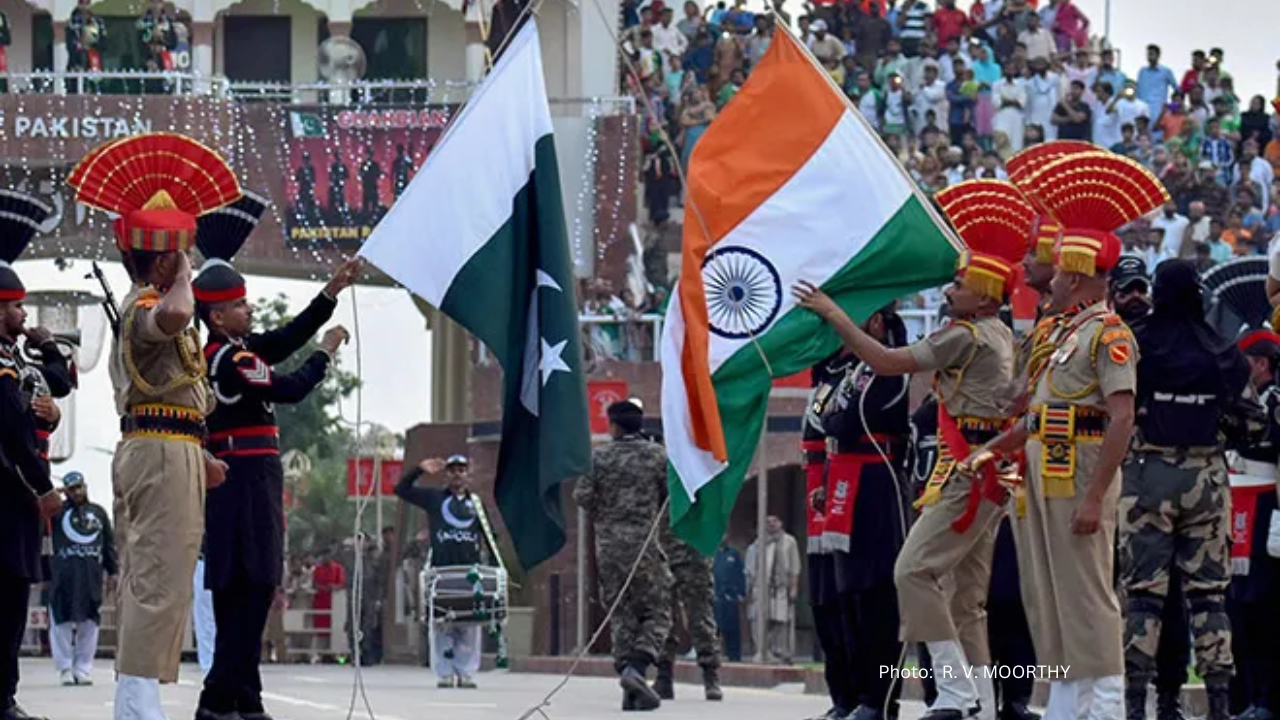Reigniting the Fault Lines: Terror, Territory, and Tensions in Indo-Pak Relations
Nuzhat Tabassum | 22 May 2025
While the whole world is fighting to stop the war in Gaza and Ukraine, India and Pakistan almost went to full-blown war, adding another problem to the already hot pot. On April 22, 26 individuals, mostly tourists, were killed by a group of people at Pahalgam, a resort in Indian-administered Kashmir. This was one of the most brutal assaults on people inside Indian territory in decades since the 2008 Mumbai attacks. Numerous eyewitness testimonies indicate that Hindu men were targeted for execution, giving this conflict a religious perspective. India blamed the incident on the Resistance Front (TRF), which has links to Lashkar-e-Taiba (LeT), a terrorist group based in Pakistan. Not only this, India also blamed Pakistan for being a part of this cross-border terrorism, which was denied by Pakistan and called for a “neutral” investigation which was rejected by India.
On May 7, India initiated a series of missile strikes on Pakistan and Pakistan-administered Kashmir. While they said that the strikes were directed against terrorist infrastructure in Pakistan, Pakistan contended that the missiles hit civilians, mosques, and schools, resulting in over 50 fatalities. On the other hand, at least 15 Indians were killed by Pakistan’s shelling. Pakistan also claimed that they have shot down five Indian fighter jets. By May 10, both sides were firing missiles at each other’s military bases before they agreed to a ceasefire brokered by the USA. From May 7 - 10, both India and Pakistan were near a full-blown war. India launched ‘Operation Sindoor’ and Pakistan ‘Marka-e-Haq (“Battle for Justice”) and ‘Operation BunyanumMarsoos’. This is just the third instance of significant, lethal conflict directly between two nuclear powers, with the other instances being the Sino-Soviet confrontations of 1969 and the India-Pakistan Kargil War of 1999. Before this, India, on April 23, decided to suspend the Indus Water Treaty (1960), in which Pakistan responded that any attempt to divert water would be considered an act of war. Pakistan retaliated by suspending the Shimla Agreement, which outlines the Line of Control (LoC), the India–Pakistan border in Kashmir.
Even though India has an official nuclear doctrine, Pakistan, since 1998, has not stated its official nuclear doctrine. However, Khalid Kidwai - then head of the Strategic Plans Division of the NCA - outlined four red lines: major territorial loss, destruction of key military assets, economic strangulation or political destabilization. In 2002, President Pervez Musharraf said that "nuclear weapons are directed exclusively at India" and would be used only if "the very existence of Pakistan as a state" were jeopardized. India, on the other hand, has used a ‘no-first-use policy’ since 1998. But it has undergone some changes over the years. In 2003, India asserted its right to deploy nuclear weapons in retaliation for chemical or biological attacks, therefore permitting first use under certain circumstances. Following the 2025 incident, New Delhi has started reevaluating its strategy. Modi has warned that India would not endure any nuclear coercion and will respond accurately and resolutely to terrorist hideouts operating under the guise of nuclear intimidation.
Both countries are showcasing their win from the war. For Pakistan, it was able to internationalize the Kashmir issue, which was a longstanding strategic goal of Pakistan. The crisis was managed by the United States, the United Kingdom, Saudi Arabia, and Turkey, and was positively received by Pakistan. They successfully portrayed the ceasefire as a demonstration of the need for foreign intervention. Conversely, Modi successfully bolstered his nationalist support base through military operations, though some hardliners did not like the ceasefire as India always resorted to bilateral negotiations over multilateral ones. India perceives itself as a regional hegemon, particularly with its assertive claim to Kashmir, and believes that international intervention in the Kashmir dispute will result in an equitable resolution. Conversely, Pakistan has shown a willingness for third-party mediation and has endeavored to maintain global attention on the subject. India successfully redirected global scrutiny onto extremist organizations based in Pakistan, reiterating demands for substantial measures from Islamabad. India has consistently alleged that Pakistan finances, trains, and harbors terrorist groups advocating for the independence of Kashmir from India.
Even though the physical fight has ended and a ceasefire has been achieved, the issue has not been solved yet. A new war has started: a diplomatic war. India has sent its diplomats to 33 countries, while Pakistan has visited countries like Turkey and China. Pakistan is highlighting the importance of its own security, adding that it wants to ensure long-term peace and renew the Indus Water Treaty. It seeks to pile the blame on New Delhi. India, meanwhile, is attributing responsibility to Pakistan, asserting that the Pakistani government has sponsored terrorist organizations in the region and that this terrorism has been integral to Pakistan's policy since its establishment.
During the Hasina regime, Bangladesh has favored India. But after her departure, narratives have changed. It now advocates for a balanced engagement with both New Delhi and Islamabad to ensure peace in South Asia. Chief Adviser Muhammad Yunus of Bangladesh issued a statement that both India and Pakistan should agree to an immediate ceasefire and engage in dialogue, reinforcing Dhaka’s commitment to peaceful conflict resolution.
A war between India and Pakistan is deadly as both of them are nuclear power states in South Asia. The recent incidents remind us of how quickly tensions here can lead to an all-out war. Both countries should resort to peaceful means to resolve this conflict. They need to bear in mind that none of them will win this war if they decide to use nuclear weapons on each other.
Nuzhat Tabassum is a Program Assistant at CGS
Disclaimer: Views in this article are author’s own and do not necessarily reflect CGS policy
